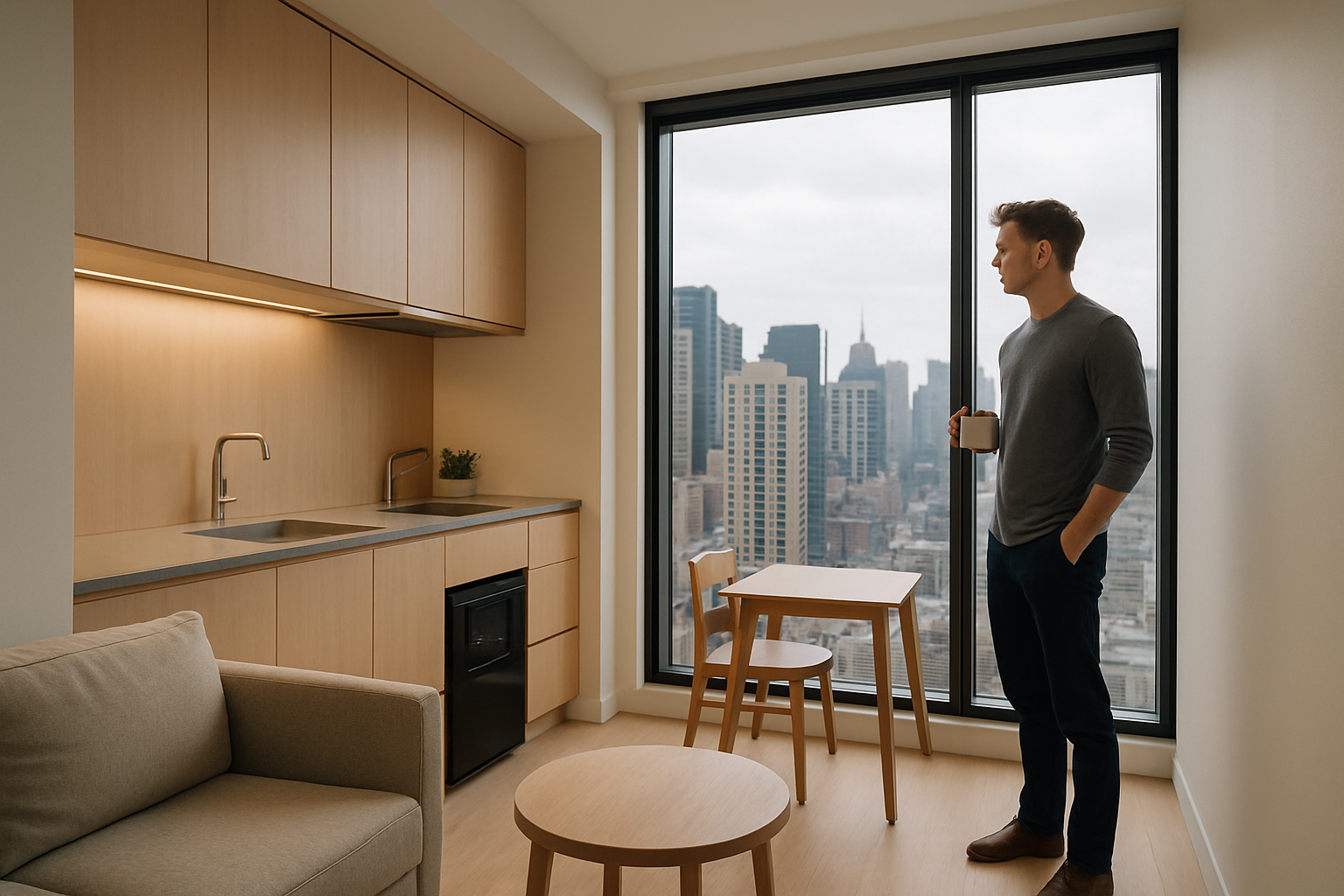Title: Microunit Apartments: The Future of Urban Living?
Introduction: In the ever-evolving landscape of urban real estate, a new trend is catching the attention of investors, developers, and city dwellers alike: microunit apartments. These compact living spaces, typically ranging from 200 to 400 square feet, are reshaping the way we think about urban housing. As cities grapple with population growth and housing shortages, microunits offer a potential solution that maximizes space efficiency while minimizing costs. But what exactly are microunits, and how are they changing the face of urban real estate?

Addressing Urban Housing Challenges
One of the primary drivers behind the microunit trend is the pressing need for affordable housing in urban areas. As cities continue to grow and attract young professionals, the demand for centrally located, affordable living spaces has skyrocketed. Traditional apartments in prime urban locations often come with hefty price tags, pushing many residents to the outskirts of cities or into shared living situations. Microunits offer a compromise, allowing individuals to live in desirable neighborhoods at a fraction of the cost of larger apartments.
Design Innovations in Microunit Living
Architects and designers are rising to the challenge of creating livable spaces within such compact dimensions. The key lies in thoughtful design that prioritizes functionality and flexibility. Many microunits feature transformable furniture, such as Murphy beds that fold into the wall or dining tables that convert into workspaces. High ceilings and large windows are often incorporated to create a sense of spaciousness, while built-in storage solutions maximize every square inch of available space.
The Financial Appeal for Investors and Developers
From an investment perspective, microunits present an intriguing opportunity. Developers can potentially generate higher rental income per square foot compared to traditional apartments. In cities with high land costs, the ability to fit more units into a single building can significantly improve the return on investment. Additionally, the lower overall rent for tenants often results in higher occupancy rates and reduced vacancy periods, contributing to a more stable income stream for property owners.
Challenges and Criticisms of Microunit Living
Despite their potential benefits, microunits are not without controversy. Critics argue that these tiny living spaces may lead to overcrowding and negatively impact residents’ quality of life. There are concerns about the long-term psychological effects of living in such confined spaces, particularly in a post-pandemic world where many people have grown accustomed to spending more time at home. Additionally, some cities have faced pushback from community groups worried about the impact of increased density on neighborhood infrastructure and services.
Regulatory Landscape and Zoning Considerations
The introduction of microunits into the housing market has prompted many cities to revisit their zoning laws and building codes. Some municipalities have adjusted minimum square footage requirements or implemented specific guidelines for microunit developments to ensure safety and livability standards are met. Others have introduced incentives for developers to include microunits in their projects as a way to address affordable housing shortages. Navigating these regulations can be complex, but it’s crucial for developers and investors looking to capitalize on this trend.
Target Demographics and Market Demand
Understanding the target market for microunits is essential for successful development and investment. Young professionals, students, and individuals who prioritize location over space are typically the primary demographic for these compact living spaces. However, there’s growing interest from other groups, including downsizing empty-nesters and those seeking pied-à-terre residences in urban centers. Market research suggests that amenities such as shared common spaces, rooftop gardens, and co-working areas can significantly enhance the appeal of microunit developments to potential residents.
Environmental Impact and Sustainability
Proponents of microunits argue that these compact living spaces offer environmental benefits. Smaller apartments generally consume less energy for heating and cooling, and their central urban locations often reduce residents’ reliance on personal vehicles. Some developers are taking the sustainability aspect even further by incorporating green building technologies and materials into their microunit projects, appealing to environmentally conscious renters and potentially qualifying for green building certifications.
Future Outlook and Market Projections
As urban populations continue to grow and housing affordability remains a pressing issue, the microunit trend shows no signs of slowing down. Market analysts predict continued expansion of microunit developments in major cities, with potential for adaptation in smaller urban centers as well. The success of these projects will likely depend on factors such as location, design quality, and the ability to create a sense of community within developments. As the concept evolves, we may see innovations in modular construction techniques and smart home technologies further enhancing the microunit living experience.
In conclusion, microunit apartments represent a fascinating intersection of urban planning, real estate investment, and changing lifestyle preferences. While they may not be a one-size-fits-all solution to urban housing challenges, their growing popularity suggests that they will play an increasingly significant role in shaping the future of urban living. For investors, developers, and city planners alike, understanding the nuances of this trend will be crucial in navigating the evolving landscape of urban real estate.





